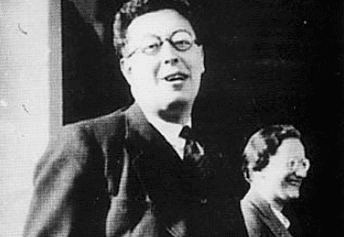Otto Fenichel is not a well-known psychoanalyst. In fact, the more orthodox aspect of psychoanalysis considers him only a “technical”. Someone who has contributed some elements to the psychoanalytic method, without having reached significant importance.
However, Fenichel was an important psychoanalyst who helped consolidate Freud’s thesis.
- Otto Fenichel is considered one of the second generation psychoanalysts.
- That is.
- He is part of the Freudian group born in the late nineteenth or early twentieth centuries.
- Witnesses to the Russian revolution.
- The growth of Nazism and other definitive phenomena of history during his youth.
Most became Freud’s heir, although each marked psychoanalytic doctrine differently.
“I also believe that a real modification of the man with the property would be (?) More effective than any ethical precept. Otto Fenichel?
Otto Fenichel was also one of the representatives of the so-called “left-wing psychoanalyst”, along with other personalities such as Erich Fromm, Siegfried Bernfeld and Wilhelm Reich, among others.
They all sought a way to associate psychoanalysis with Marxism and explore the political problems of the unconscious and its phenomena.
Otto Fenichel was born in Vienna, Austria, on December 2, 1897, from a very helpful Jewish family. His father, Leo, was a tax lawyer for the Austro-Hungarian Empire.
Otto actively participated in the Austrian youth movement and in Jewish youth groups during those years, his goal was to unite the political revolution with sexual freedom.
With some colleagues, he wrote a text on this subject in 1916, prompting his expulsion from the place where he was studying.
In fact, since 1912, he and 20 other colleagues had set up a group that taught a seminar on sexology at the Academic Association of Jewish Physicians, with the aim of filling the gap in the university’s medical programs.
From the time he entered the University he became interested in psychoanalysis and attended Sigmund Freud’s lectures with great enthusiasm.
In 1918, he came into contact with Siegfried Bernfeld’s thesis, which soon became part of the famous Vienna Psychoanalytic Society “Wednesday night”.
As soon as he finished his medical studies, Otto Fenichel moved to Berlin to train as a psychoanalyst at the psychoanalytic polyclinic and the Berlin Institute of Training.
In 1922 he made his first analysis with Paul Federn and then with Sandor Rado in Berlin. In 1935 he published his first book, Theories of Neurosis, in a two-volume edition.
At the same time, he began to question the bureaucratic practices of the Psychoanalytic Association, so he decided to create a separate group, which he called “Children’s Seminary”, which he led with Schultz-Henke until 1933.
In 1930, Wilhem Reich joined the group, which already included other prominent psychoanalysts of the time, and from his notes saw that this group was much more advanced than the Vienna group in social matters.
Thus was born the Freudian political movement, which reached its peak in 1931, however, internal struggles began quickly, both for personal reasons and for intellectual differences.
With Hitler’s coming to power and the proscription of Freud’s books, the group had to collapse, however Otto Fenichel invented a clandestine communication system, which he called Rundbriefe (circular letters).
This allowed them to be aware of what everyone thought and did, it is said that more than 119 of these letters were published, which dealt with all kinds of topics.
Otto Fenichel was forced into exile in Oslo, Norway. He met with Wilhem Reich several times, but there was a significant discrepancy between them.
While Reich advocated a direct fight against Nazism to preserve psychoanalysis and Marxism, Fenichel believed that clandestine work was better, which eventually alienated these two great psychoanalysts.
Fenichel lived for a time in Prague and quickly emigrated to the United States, where he met some of his former comrades.
At the age of 46 he had to graduate from medical school again, as the United States had not validated his previous training, and was also forced to stop expressing his left-wing positions.
He was deeply uncomfortable with the medicalized model of American psychoanalysts and felt Freud’s legacy was deteriorating.
He was distraught and relatively cornered and died prematurely at the age of 48. Still, his work is a must for Freudian healing technicians.

